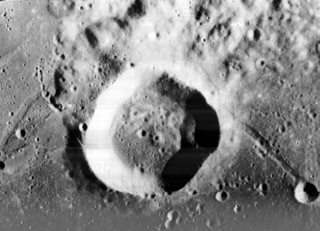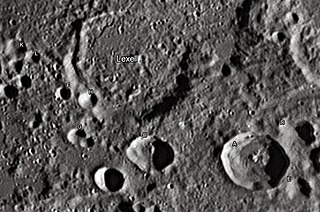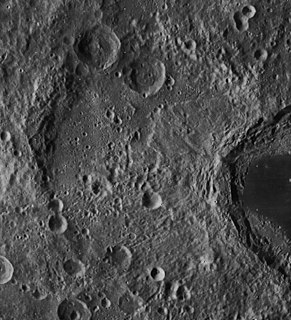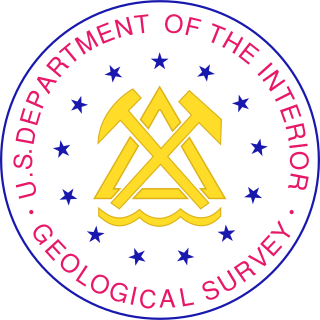 Oblique Lunar Orbiter 4 image | |
| Coordinates | 26°18′N89°18′E / 26.3°N 89.3°E Coordinates: 26°18′N89°18′E / 26.3°N 89.3°E |
|---|---|
| Diameter | 66 km |
| Depth | Unknown |
| Colongitude | 274° at sunrise |
| Eponym | Alexander M. Lyapunov |


Lyapunov is a lunar impact crater named for Aleksandr Lyapunov that is located along the east-northeastern limb of the Moon, and is viewed from the side by observers on Earth. The eastern rim of this crater just falls into the section of the Moon called the far side, and visibility of this formation is affected by libration.

Lunar craters are impact craters on Earth's Moon. The Moon's surface has many craters, almost all of which were formed by impacts.

An impact crater is an approximately circular depression in the surface of a planet, moon, or other solid body in the Solar System or elsewhere, formed by the hypervelocity impact of a smaller body. In contrast to volcanic craters, which result from explosion or internal collapse, impact craters typically have raised rims and floors that are lower in elevation than the surrounding terrain. Impact craters range from small, simple, bowl-shaped depressions to large, complex, multi-ringed impact basins. Meteor Crater is a well-known example of a small impact crater on Earth.

Aleksandr Mikhailovich Lyapunov was a Russian mathematician, mechanician and physicist. His surname is sometimes romanized as Ljapunov, Liapunov, Liapounoff or Ljapunow. He was the son of astronomer Mikhail Lyapunov and the brother of pianist and composer Sergei Lyapunov.
This crater is attached to the south-southeastern rim of the larger walled plain Rayleigh. It is also attached to the western rim of the much larger walled plain Joliot, a formation that lies entirely on the far side of the Moon. To the south-southwest of Lyapunov is the crater Hubble.

Rayleigh is a lunar impact crater, approximately 114 kilometers in diameter, that lies along the northeast limb of the Moon. This feature is seen edge-on from Earth, making it difficult to see much detail. In addition, libration effects can completely hide this crater from view. It lies just to the north of Lyapunov, and to the northwest of the large Joliot. Attached to its southwest rim is the smaller Urey.

Joliot is a large lunar impact crater that lies on the far side of the Moon, just past the eastern limb. At this location it lies in a region of the surface that comes into sight during a favorable libration, although at such times it is viewed from the side. Thus viewing this crater in detail must be done from orbit.

Hubble is a lunar impact crater that lies very near the east-northeastern limb of the Moon. At this location it is viewed almost from the side from Earth, and the visibility of this feature is affected by libration. It lies to the north of the Mare Marginis and northeast of the crater Cannon. About one crater diameter to the north-northeast is Lyapunov.
The shape of this crater's rim has been modified due to the large adjacent formations, so that it is somewhat polygonal rather than circular. The rim along the western side is less affected by reshaping, although it too is worn by impact erosion. The ejecta from nearby impacts partly covers the northern and some of the southeastern parts of the interior floor. The former forms a triangular section of rough ground that reaches to the midpoint of the floor. The remainder of the floor is relatively level and marked only by tiny craterlets.
In elementary geometry, a polygon is a plane figure that is described by a finite number of straight line segments connected to form a closed polygonal chain or polygonal circuit. The solid plane region, the bounding circuit, or the two together, may be called a polygon.
Note that some publications list this crater as "Liapunov".




















